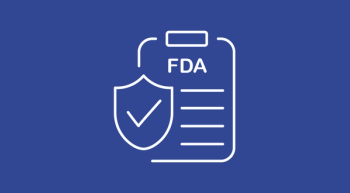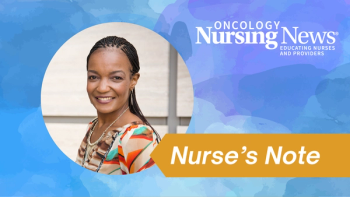
Oncology Care Model: What Did We Learn?
The Oncology Care Model did not significantly improve care, yet patients were satisfied with their care and many oncologists overcame their hesitancy towards value-based models.
Only small improvements in quality-care measures were observed among practices participating in the Oncology Care Model (OCM) compared with non-participating practices, according to an evaluation of the OCM that was presented during the 2023 ASCO Quality Care Symposium.
Specifically, both OCM practices and non-OCM practices reported similar proportions of patients with emergency department visits during chemotherapy treatment, similar rates of timely hospice enrollment, and similar overall ratings of care. The timeliness of chemotherapy administration following breast cancer and colorectal cancer surgery were similar in both groups.
In addition, the percentage of patients who were at risk for neutropenia who received growth factor treatments and the percentage of patients at risk for nausea who received potent antiemetics were similar between the 2 groups and there were no significant differences in quality of end-of-life care.
The only care metric that improved in the OCM arm was hospitalization in the last month of life, in which there was a relative 0.8% difference.
Of note, the total episode payments did decrease by $499 over the 9-month performance period. Over time the savings increased—suggesting that practices got better at saving money over time.
According to Nancy L. Keating MD, MPH, who is clinical lead of the Centers for Medicare & Medicaid Services (CMS) OCM Evaluation team, and who presented the findings, better parameters are needed to understand and evaluate the efficacy of value-based models and identify opportunities to improve care across the country.
“There was basically no change,” she said, in reference to the OCM participating and non-participating practices. “We saw some small improvements in most quality measures for OCM and comparison episodes, but no differential improvement for OCM vs comparisons—aside from this very small decrease in hospitalizations in the last month of life.”
She continued by noting that “More work is needed to understand both variation in quality measures and how well these measures work in a performance-based payment value-based payment model,” how much improvement can be expected, and whether 2-sided risk models like the Enhancing Oncology Model [EOM] may have greater potential to improve quality.”
CMS Oncology Care Model
The CMS Oncology Care Model was a voluntary episode payment model designed to improve the value of care for fee-for-service Medicare patients undergoing chemotherapy. The OCM had a 2-part payment system for participating practices. These practices received monthly payments to support care transformation and they could earn performance-based payments if they met quality and spending goals.
Five measurements were used to assess the success of this model. These metrics included the percentage of patients with all-cause emergency department visits; the percentage of patients who were admitted to hospice for at least 3 days before their death; the percentage of patients who were screened for pain and received a plan of care to address that pain; the percentage of patients who were screened for depression and received a plan to address their depression; and lastly, the patient-reported experience of care.
These outcomes were compared from the baseline period, between July 2014 and December 2015, through the intervention periods, between July 16 through June 2021. Overall, investigators looked at 1,502,665 OCM and 1,662,859 comparison episodes. The models were adjusted for patient characteristics, such as age, sex, comorbidities, etc., practice characteristics, such as clinician types and number of oncologists, as well as market characteristics, including population size, etc.
OCM may not have led to objective improvements in outcomes compared with non-OCM practices, however, according to Kerin Adelson, MD, MHCDS, there are still key takeaways to be had from the implementation of this model.
“Thirty percent of patients on systemic therapy for cancer were treated in a care model that valued the right things and were satisfied with their care,” Adelson, who is the chief quality and value officer at the The University of Texas MD Anderson Cancer Center, said. “Practices increased access, addressed goals of care, and learned about the importance of care coordination.”
Further, patients receiving care at OCM-participating practices reported positive experiences with care, even if there was still room for improvement. These patients were also more likely to be asked about their social/emotional distresses and be provided resources, to discuss advanced directives with providers, and to be satisfied with provider explanations of treatment benefits, risks, adverse events, and costs.
What Did We Learn?
Adelson argued that oncologists gained enthusiasm for, and overcame fears of, value-based programs, and that there is an increased willingness to participate in future models, such as the EOM. Learning itself may have been the greatest end point in this study, she suggested.
“Is a program a failure if it doesn’t reach the prespecified goals, but a lot of people learned how to think about cancer care differently?” she asked the audience.
Further, she pointed out that there was no harm to care—such as scrimping on services to earn performance-based payments—and that when it came to acute care, both those participating in and those not participating in the model showed improvements in care, which she says may be a “win.” She posited that practice-reported measures might not translate into improved outcomes and that new parameters to measure these models might be considered going forward.
Adelson also theorized that the things she loved about participating in OCM may have contributed to its downfall in performance metrics. For instance, the design allowed practices to be creative in their improvement strategies. However, because there were no stipulations in what the generous Monthly Enhanced Oncology Services (MEOS) payments were to be used for, some practices may not have invested the funds in meaningful practice redesign.
Lastly, as a leader, the OCM allowed Adelson to build new clinical programs that would allow her to team to take better care of their patients, yet there were no requirements for frontline clinical education, engagement, or feedback.
Moving forward, investigators might consider providing and in-depth look at the practices that performed substantially above the mean, she suggested, looking into how they improved over time, what their onset visits revealed, and how they invested their MEOS payments.
“Future models might need to be more prescriptive about required infrastructure,” Adelson concluded. “Mandatory models might reduce the selection bias towards practices who hope to achieve economic dividends… and future analysis should focus on the highest performing practices and whether they build systems that can be scaled.”
References
- Keatin NL, Brooks GA, Landrum MB, et al. Has the oncology care model improved quality of oncology care? Presented at: ASCO Quality Care Symposium. October 27-28, 2023; Boston, MA.
- Adelson K. Great Hope/Cruel Reality: Processing OCM Results. Presented at: ASCO Quality Care Symposium. October 27-28, 2023; Boston, MA.
Newsletter
Knowledge is power. Don’t miss the most recent breakthroughs in cancer care.
















































































